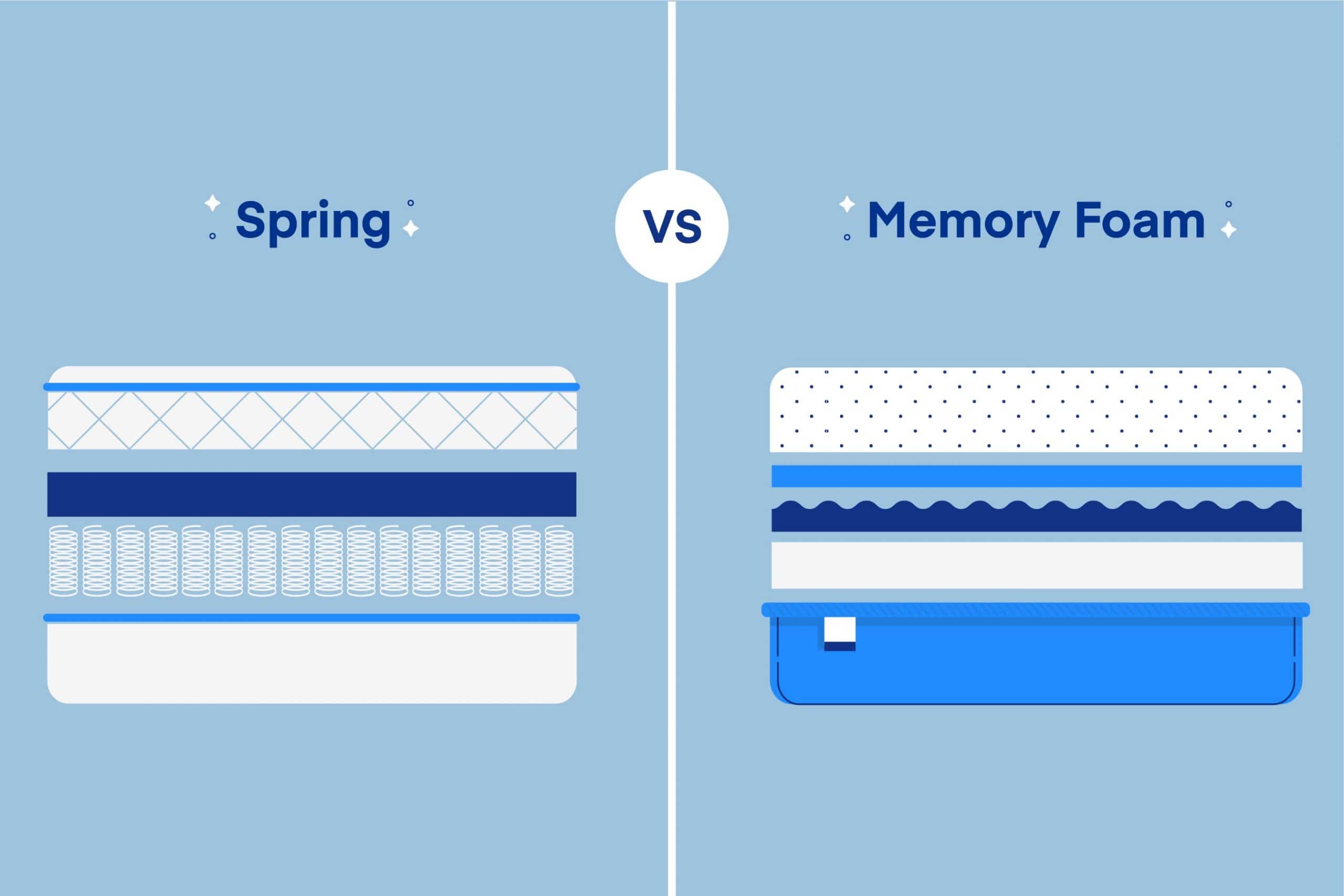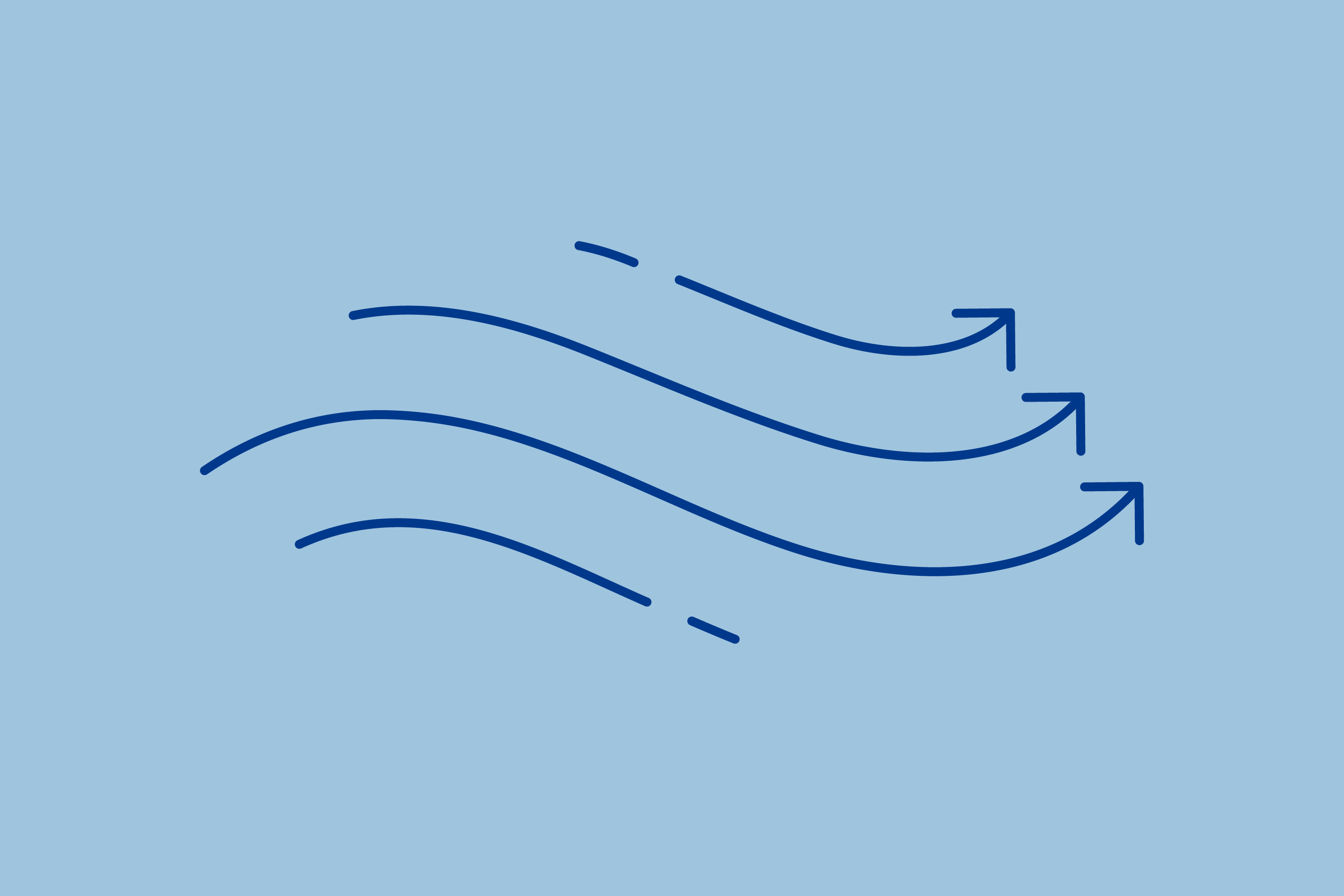The invention of spring mattresses preceded memory foam, but that does not mean one is obsolete while the other is technologically superior. The basic difference between the two types of mattresses is in their feel—while memory foam is more body-conforming and pressure relieving, spring mattresses are bouncier with more give.
Before memory foam was introduced in the 90s, spring beds were popular. The addition of springs offered more support to beds than its predecessor, which used to be large pillows filled with cotton, hay, or down. Yet with more constructions to choose from, shoppers often ponder whether a memory foam or spring mattress is better.
Both memory foam and spring mattresses have their benefits and drawbacks. You have to decide which one to choose for a good night’s sleep based on your priorities and preferences. Choosing the best mattress type for your body is important for quality sleep. A 2002 study found that a comfortable bed enhances your sleep quality.
Quick Guide: A 30-Second Summary
| Best Memory Foam Mattress Overall | Amerisleep AS3 |
| Best Spring Mattress Overall | Amerisleep AS5 Hybrid |
What is Memory Foam?
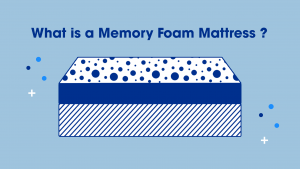 Memory foam is made by treating polyurethane foam with chemicals to enhance its density and viscosity. Memory foam’s viscoelastic nature allows it to mold to your body while providing pressure-point relief. Memory foam, also known as viscoelastic foam, is temperature and pressure-sensitive.
Memory foam is made by treating polyurethane foam with chemicals to enhance its density and viscosity. Memory foam’s viscoelastic nature allows it to mold to your body while providing pressure-point relief. Memory foam, also known as viscoelastic foam, is temperature and pressure-sensitive.
When you lie on memory foam, your body temperature and weight soften the foam forming around your body almost like a hug. The foam evenly distributes weight on the sleeping surface, relieving your sensitive areas and establishing a mattress for pressure points.
Every body part gets support as the contouring foam molds to your curves, making memory foam mattresses a good option for alleviating back pain or joint pains. If you are a back or side sleeper, memory foam provides natural spinal alignment and enhanced lumbar support.
Types of Memory Foam
Memory foam beds respond to your body heat and pressure, but they also tend to trap heat. To beat heat retention, some manufacturers add cooling features like gel, plant oils, copper, or graphite.
Traditional Memory Foam
By its nature, traditional memory foam mattresses have an open-cell design. However, some companies expand the cells for even better airflow. This combats the heat retention issue.
Gel Memory Foam
Gel memory foam contains liquid gel or gel beads swirled or infused into the mattress, enhancing its coolness. Gel beads (tiny capsules filled with gel) decrease the temperature of your bed. The gel comprises “phase-changing materials,” also known as “PCM,” which start off as solid and transform into liquid, absorbing your body heat.
The exact constituents of PCM is a closely-guarded secret by mattress manufacturers—it’s made of some synthetic materials and chemicals which are not known to be harmful. Gel foam may be paired with a fabric cover that also features PCM to establish a cooling mattress.
Plant-Based Memory Foam
In plant-based memory foam, a portion of the petroleum is substituted with plant oils, making the bed feel cooler and more responsive.
Memory Foam with Cooling Additives
Minerals like graphite and copper, known for being good conductors of heat, are added to memory foam to help in dissipating body heat. Additives like these enable you to sleep cool through the night. Copper is also antimicrobial, which can be a helpful feature inside a hypoallergenic mattress.
Amerisleep’s Best Memory Foam Mattress
At Amerisleep, we offer five memory foam mattresses, each with a distinct firmness. We do so to best suit all possible styles of sleepers, ensuring that any one of our mattresses could be the best option for certain sleepers. However, when it comes to the mattress that suits the widest possible range of sleepers, the easy recommendation is our AS3 mattress.
-
Price Range
$1049 to $2198
-
Mattress Type
Memory Foam
-
Firmness
5 to 6 out of 10 (Medium)
-
Availability
All sizes
-
Warranty
20 Years
-
Thickness
12 Inches
The ever-adaptable AS3 is the most popular Amerisleep mattress, feeling soft enough for side sleepers and supportive for back sleepers.
- Airy, adaptable plant-based memory foam cushion
- Affinity foam with five support zones from HIVE®
- Bio-Core® increases the bed's structural capabilities
- Back, side, and combination sleepers
- Partners seeking a versatile mattress for couples
- Hot sleepers needing a cool memory foam mattress
The Amerisleep AS3 is our most commonly chosen mattress model due to its medium feel and affordable prices. We recommend the AS3 for most sleeping styles, particularly shoppers interested in sharing the bed with a partner.
The AS3 contains three foam layers. The first foam layer is our unique Bio-Pur® foam, a partly plant-based creation designed to improve upon traditional memory foam. Some of the usual ingredients that go into producing memory foam are replaced with natural plant oils, increasing the final product’s responsiveness and breathability.
In other words, Bio-Pur® foam does a better job of staying cool and adapting to movement than the average memory foam.
Underneath the comfort layer is Affinity foam with HIVE® technology. This exclusive technology consists of hexagonal cutouts across the Affinity foam, letting the mattress flex more easily under weight and movement. This adaptability increases the bed’s support and pressure relief.
The last layer of the AS3 is Bio-Core® foam. This structural poly-foam establishes long-lasting support, letting shoppers get a decade or more out of the AS3 with careful use.
All of these foam layers are carefully wrapped in a mattress cover of Refresh fabric. Not only can Refresh lower the surface temperature significantly by a few degrees, but it also converts body heat into restorative infrared energy.
Sleepers who prefer the feel of a spring mattress can still take advantage of the AS3’s versatility by choosing its bouncy hybrid counterpart. The AS3 Hybrid features pocketed coils that keep movements large and small from rippling across the bed, along with helpful edge support.
Like all Amerisleep mattresses, the AS3 is backed by a 100-night sleep trial and a 20-year warranty.
What Is a Spring Mattress?
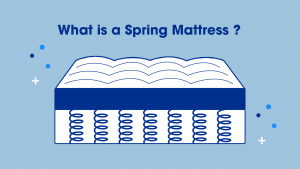 Spring mattresses, also known as innerspring mattresses, were first introduced in 1871 and gained popularity due to their support and bounce. Prior to spring mattresses, beds used to be similar to large pillows stuffed with materials like cotton, hay, wool, or down—not lending sufficient support. Adding a coil layer improves mattress support.
Spring mattresses, also known as innerspring mattresses, were first introduced in 1871 and gained popularity due to their support and bounce. Prior to spring mattresses, beds used to be similar to large pillows stuffed with materials like cotton, hay, wool, or down—not lending sufficient support. Adding a coil layer improves mattress support.
The basic structure of spring mattresses include metal coils or springs for support, which is encased in foam, forming the “support layer.” This layer is topped with upholstery forming the “comfort layer.” The layered upholstery ensures that the sleeper doesn’t feel the coils and springs directly under their body, which may lead to discomfort.
The upholstered layer includes a quilted top that determines the mattresses’ plushness and feel. Various types of foam layers, fiber pads, quilts, coils, and springs make up a traditional spring mattress.
While the quilted top, foams, and fiber pads contribute to comfort for sleepers, the coil system lends support and promotes airflow within the mattress, enhancing its breathability. Coil layers of varying densities form the base structure of spring mattresses. Stomach sleepers may benefit from the coil layer because it pushes back preventing their body from arching unnaturally.
The feel of spring mattresses differ from each other depending on factors like spring type, the thickness of the metal used to make it (also known as gauge), spring density, and how they are connected.
Types of Spring Systems
Different kinds of springs and coils may be used to make spring mattresses. The way these coils and springs are layered, arranged and connected within a bed determine the different types—such as Bonnell coil, offset coil, continuous coil, pocket coil, coin-on-coil, and innerspring.
Bonnell Coil Mattress
Hourglass-shaped coils form the support layer in this innerspring mattress. These coils are the cheapest amongst spring mattresses, making these beds less durable than other types.
Offset Coil Mattress
Individual coils are connected to each other as they sit very close and tight together forming a coil layer that provides firm support to the mattress. Offset coil mattresses are durable, but the connected coils transfer motion, not making them a good option for couples.
Continuous Coil Mattress
Continuous coils comprise one big wire which is twisted into thousands of coils to form the support layer. While this arrangement makes a very durable bed, it also transfers motion because the entire support layer is very well connected.
Pocket Coil Mattress



Pocket coils mattresses contain innerspring coils individually wrapped in fabric. They are the latest version of coils and are technologically more advanced than the others, making them the most expensive in the spring mattress category. The individual wrappings reduce motion transfer significantly, making this bed one of the favored options.
Coil-on-Coil Mattress
Two layers of coils are stacked on top of each other to enhance the support in a coil-on-coil mattress. The additional layer stacked over the base layer reduces bounce and increases the support in this coil-on-coil mattress.
Amerisleep’s Best Spring Mattress
All of our spring mattresses rely on pocketed coils for maximum comfort, and most of the ones we offer are hybrid counterparts of our more popular memory foam mattress models. While all of them are high-quality mattresses, we often point to the AS5 Hybrid as the best choice for sleepers who want a luxuriously plush mattress.
-
Price Range
$1949 to $3998
-
Mattress Type
Hybrid
-
Firmness
3 out of 10 (Soft)
-
Availablity
All sizes
-
Warranty
20 Years
-
Thickness
14 Inches
We designed the AS5 mattress line to feel plush without letting the sleeper’s body sink too far into the surface.
- Softer feel provided by Bio-Pur® and Active Flex
- Coils wrapped for increased responsiveness
- Edge support established with thick, supportive coils
- Side sleepers
- Lightweight, petite, and plus-sized sleepers
- Shoppers seeking a luxury mattress
Our softest model is the Amerisleep AS5, available as both a memory foam or a hybrid mattress. The Amerisleep AS5 Hybrid establishes a soft yet supportive surface by relying on cushioning, responsive foams paired with bouncy, individually wrapped coils.
There are four layers that make up the AS5 Hybrid, all of which are securely wrapped up in a temperature-regulating, restoration-promoting Refresh mattress cover.
The first layer is our special Bio-Pur® memory foam, engineered to be more breathable and responsive than traditional memory foam. This means that even as the top layer of the AS5 hugs your body throughout the night, it will stay cool and adapt swiftly to any changes in position.
Active Flex foam forms the next layer of the AS5. The buoyancy of Active Flex keeps a sleeper from experiencing uncomfortable sinkage on the soft surface without compromising the bed’s plush feel.
Pocketed coils provide the supportive “backbone” of the AS5 Hybrid, with every coil retracting and responding individually as pressure is applied. This means the coils won’t transfer movements to the surrounding coils, so one partner won’t jar another out of sleep if they suddenly have to move in the night. These coils rest on a foam base that promote structural integrity.
The Amerisleep AS5 Hybrid includes a 100-night sleep trial and a 20-year warranty. These policies are also packaged with the original AS5, perfect for anyone who prefers the feel of a memory foam mattress.
Differences Between Memory Foam and Spring Mattress
| Parameters | Memory Foam | Spring |
|---|---|---|
| Durability | Memory foam is usually known to be more durable because the lack of coils reduces the risk of sagging. | Spring mattresses may not be as durable as memory foam because the springs and coils may start poking and sagging due to extended use. |
| Support | Memory foam’s body conforming feature allows it to support all body parts uniformly. | Spring mattresses may offer firm support, but they do not apply uniformly to all body parts. |
| Bounce | Usually, the recovery time of memory foam is slow making it low in bounce as compared to spring mattresses. | The spring and coil layer makes spring mattresses bouncier compared to memory foam. |
| Pain-reducing | Memory foam molds to your body and provides pressure relief, alleviating joint and back pain. It aligns with the natural curvature of your spine offering better support. | Spring mattresses are not able to uniformly support the body, causing damage to pressure-points. Springs or coils pressing into already existing pain areas may aggravate the pain. |
| Motion transfer isolation | Memory foam is very good at isolating motion transfer making it a good option for couples or those who sleep with children. | Spring mattresses are usually not good at isolating motion due to the densely connected metal coil layer which transfers motion. |
| Temperature-regulation | Memory foam mattresses tend to retain heat more than other mattress types—to combat this issue, mattress brands infuse cooling technologies into these beds. | The coil layer enhances airflow making for good temperature regulation in spring mattresses. |
| Price | You will find memory foam in a vast price range, depending on the materials used in it. | Spring mattresses are usually less expensive than memory foam. |
A particular mattress type may be more suitable to a certain sleep position or body type than the other. If you don’t choose the right mattress with a certain blend of cushion and support, then your mattress may sag, affecting its durability.
Memory foam beds are available in varying firmness levels for different body types and sleeping positions. While a softer mattress is recommended for lightweight sleepers weighing less than 130 pounds, a firmer mattress usually suits those weighing above 230 pounds so that their weight does not bear down on the mattress giving them a “sinking” feel.
Plus-size sleepers may even benefit from sleeping on a spring mattress because the coil and spring layer enhances the bed’s breathability. Usually, those on the heavier side tend to sleep hot and sweat more—a spring mattress may improve airflow and bounce. The coil layer also offers a much-needed pushback against the weight of a sleeper, preventing them from experiencing a “sinking” feel.
Spring mattresses may not be as durable as memory foam. To counter this disadvantage and to blend in the benefits of other types of beds, the hybrid mattress was born.
Hybrid Mattresses—Blending Innersprings with Other Mattress Types



Hybrids usually have pocketed coils, which are individual coils encased in fabric, isolating motion transfer. Pocket coil spring mattresses have the advantage over traditional spring mattresses, with their wrappings establishing a better mattress for motion isolation.
Hybrids also tend to have firmer edge support making it easier to get in and out of the bed, without causing the mattress to sag. They may have thicker coils along the sides or a supportive foam perimeter.
The top comfort layer is made of either memory foam or latex foam which molds to your body’s curves, providing pressure-point relief and spinal alignment if you are a back sleeper. While enjoying the cradling comfort of memory foam you can reap the benefits of a firmer bounce and increased airflow due to the pocket coil layer in a hybrid bed.
Things to Consider When Choosing a Mattress
While the type of mattress you pick is a key part of whether a mattress will feel comfortable or not to you, it’s not the only point to consider as you shop. The firmness of the mattress, and even its size and thickness, can all make or break a bed when it comes to the most comfortable mattresses.
Mattress Firmness
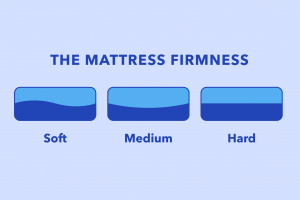


Sleeping position affects how you press down on the mattress, leaving some parts of the body needing extra support and cushion:
- Mattresses for side sleepers need the softest feels of all, due to the pressure placed on their shoulders and hips. Side sleepers often prefer memory foam mattresses to traditional spring beds, enjoying the pressure relief of foam beds.
- Mattresses for back sleepers need to have a firmer feel than what side sleepers need, though not overly firm either. Medium-firm mattresses are often best.
- Mattresses for stomach sleepers must provide the firmest feels of all to minimize sinkage into the bed. Stomach sleeping is the position most likely to cause back pain due to the way gravity pushes their torsos into the bed.
- Mattresses for combination sleepers must offer a versatile feel that suits different sleep positions. Medium feels are often preferred, though a medium-firm can work for some combo sleepers.
Body weight affects how much you press down on a sleeping surface. A firmer surface will react less to more weight than a softer mattress well, which can be helpful for plus-sized sleepers over 230 pounds who want to avoid feeling like they’re sinking into their beds. Mattresses for heavy people can also feature targeted support features.
Conversely, a lightweight sleeper presses down less than most manufacturers anticipate. So they need extra softness to compensate in mattresses for petite sleepers.
Mattress Thickness
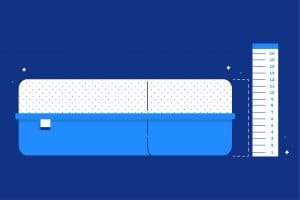


The ideal bed height lets you sit on the side of the bed and rest your feet flat on the floor. Your knees should be parallel to your hips, too. If a bed is too low, a set of bed risers can raise it easily.
When it comes to a mattress that will last, the best mattresses for adults are at least 10 inches thick. Thinner mattresses cannot withstand nightly use for years on end without significant wear and tear, which will cause them to rapidly lose their supportive feels.
Mattress Size
Mattress size determines how much sleeping space you’ll have and how much room space the mattress will take up. What the best mattress size is for you will depend on your budget, your bedroom size, your height, and whether or not you plan on sharing the bed or sleeping alone.
The standard mattress sizes and dimensions are as follows:
| Mattress Size | Dimensions in Inches |
|---|---|
| Twin | 38 inches by 74 inches |
| Twin XL | 38 inches by 80 inches |
| Full | 54 inches by 75 inches |
| Queen | 60 inches by 80 inches |
| King | 76 inches by 80 inches |
| California King | 72 inches by 84 inches |
| Split King | Two mattresses, each 38 inches by 80 inches |
Naturally, a bigger mattress will cost more than a smaller size, while a too-big mattress can uncomfortably dominate a bedroom and make it feel cramped. Some mattress sizes are also better suited for taller sleepers over 6 feet tall, with a longer mattress offering more legroom.
When it comes to mattresses for couples, nothing smaller than a queen mattress will do. A double bed offers roughly the space of a crib mattress for two adult sleepers.
We have a number of guides that compare and contrast mattress sizes that sleepers often find themselves torn between:
- King vs. Queen Mattresses: What’s the Difference?
- Twin vs. Full vs. Queen: Which Mattress Size is Right For You?
- Twin vs. Twin XL: What’s the Difference?
- King vs. California King: What’s the Difference?
FAQs
Do spring mattresses lead to off-gassing?
Off-gassing refers to the smell of chemicals from new mattresses, which is more prevalent in memory foam mattresses than traditional spring mattresses. The smell occurs as volatile organic compounds used in production break down as the mattress is unboxed. However, off-gassing isn’t a big concern and it can be remedied by airing out the mattress for a couple of days before using it.
Are hybrid beds suitable for all body types and all kinds of sleepers?
Hybrid mattresses have the advantage of providing both improved airflow and enhanced bounce through the coil layer. The layer of coils is present in the support layer, while the comfort layer may have either memory foam or latex, same as a foam bed.
If you want enhanced breathability and bounce you may choose a hybrid bed irrespective of your body type or sleeping position. You have to decide on the firmness level of the top comfort layer depending on your body type and sleeping position.
What is the most comfortable type of mattress?
Usually, the most comfortable mattresses offer at least 2 inches of cushioning comfort foam. This means that many sleepers won’t be happy with a traditional innerspring mattress. Its design usually has thin comfort layers that don’t relieve as much pressure as a memory foam mattress.
However, that doesn’t necessarily mean a memory foam mattress is the most comfortable choice for everyone. Latex mattresses and hybrid mattresses also have thick comfort layers that are excellent at relieving pressure.
What type of mattress is best for side sleepers?
Of the two, memory foam beds are the better mattresses for side sleepers. We do not recommend classic innerspring mattresses for side sleepers, as the traditional design doesn’t offer the needed cushioning to fully embrace their shoulders and hips.
This doesn’t mean side sleepers have to miss out on spring mattresses, though. Hybrid mattresses for side sleepers can mix the hug-like feel of a memory foam mattress with the bounce of an innerspring mattress.
Is memory foam healthy to sleep on?
Yes, a memory mattress can be safe and non-toxic to sleep on, though you don’t just have to take a manufacturer’s word for it. Look for foam certifiers like CertiPUR-US®, who examine a foam’s production process to make sure it’s free of potentially harmful materials like formaldehyde.
You’ll just want to look for memory foam mattresses free of fiberglass. While fiberglass won’t cause harm if it stays inside a mattress, it can cause irritation and breathing difficulty if it escapes.
Do memory foam mattresses need a box spring?
No, unlike traditional spring mattresses, memory foam mattresses do not need box springs.
Conclusion
With numerous available options, buying the best mattress for yourself may seem like a difficult task. Both memory foam and spring have their advantages and disadvantages. If you’re unable to make up your mind between these two, opting for a hybrid might be best. A high-quality hybrid offers the advantages of two types of mattresses combined in one bed.
About the author
Geoff McKinnen is a writer focusing mainly on the healthcare industry and has written articles on everything from foods to help you lose weight to the connection between Alzheimer’s and sleep. Geoff’s passionate about helping readers improve their well-being to lead happier lives. Outside of work, Geoff enjoys cycling and hiking and believes that by leading a healthy lifestyle, he can help others do the same.
View all posts